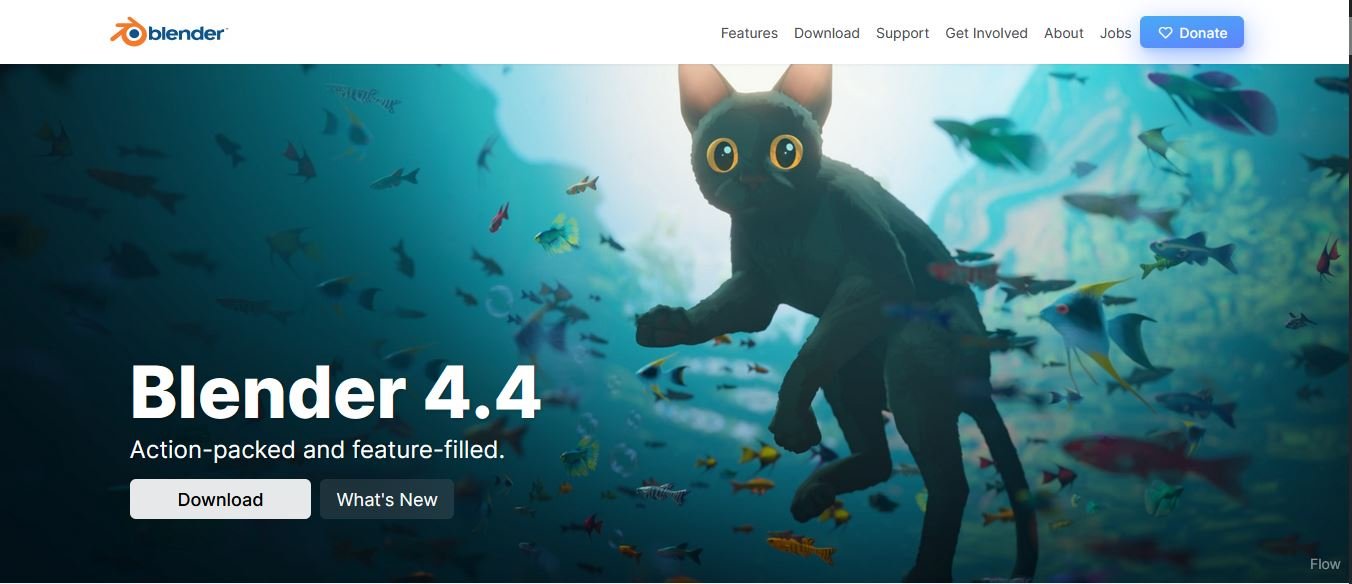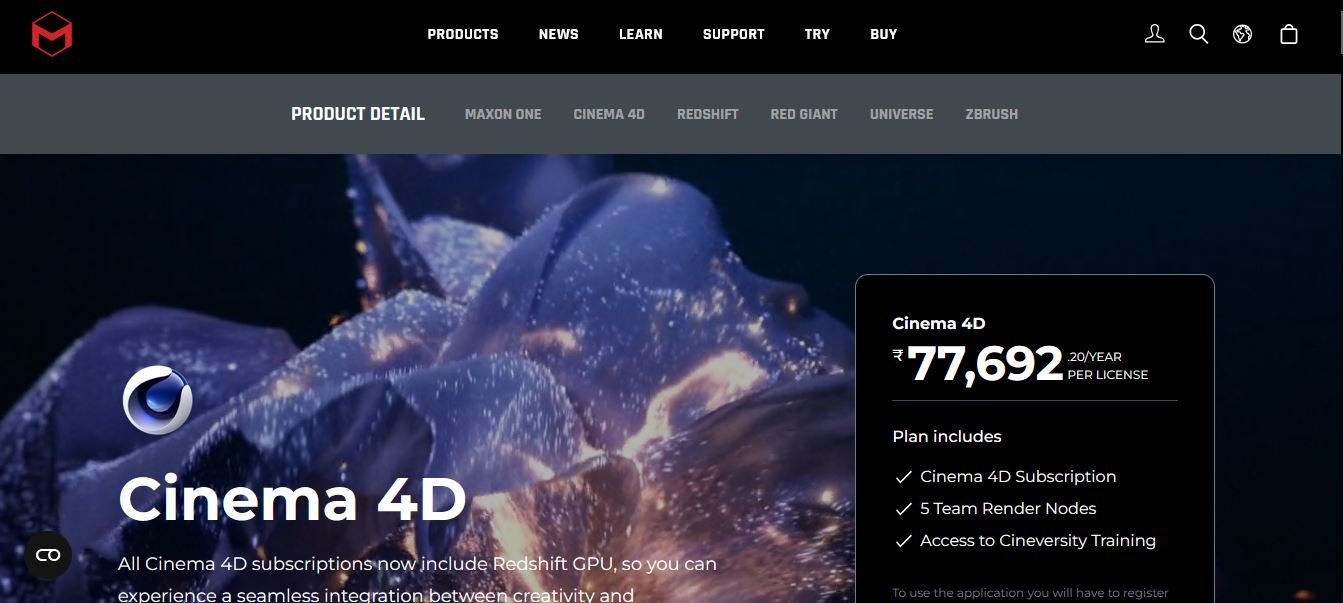The demand for 3D modeling software has grown significantly in various industries, from entertainment and gaming to architecture and product design. Professionals rely on these tools to create stunning visuals, detailed simulations, and intricate designs. Selecting the right software depends on your expertise, industry requirements, and personal preferences.
Here, we highlight some of the best 3D modeling software for professionals, exploring their key features, advantages, and ideal use cases.
- Blender
- Autodesk Maya
- ZBrush
- Autodesk 3ds Max
- Cinema 4D
- Rhino 3D
1. Blender
Blender is an open-source 3D modeling software that has gained immense popularity among professionals and hobbyists alike. It’s a versatile tool that supports modeling, animation, simulation, rendering, and even video editing.
Key Features:
- Comprehensive toolset for 3D modeling, sculpting, and texturing.
- Advanced rendering engines like Cycles and Eevee.
- Built-in tools for rigging and animation.
- Support for simulations such as smoke, fluid, and cloth.
- Open-source and free to use, with a vibrant community contributing to its development.
Best For:
- Artists and animators in gaming and film production.
- Professionals looking for a cost-effective yet powerful tool.
Pros:
- No licensing fees.
- Active community support and tutorials.
- Cross-platform compatibility.
Cons:
- Steep learning curve for beginners.
- Not industry-standard in some specialized fields.

2. Autodesk Maya
Autodesk Maya is a leading software for 3D animation, modeling, simulation, and rendering. It’s widely used in the film and television industry for creating high-quality animations and visual effects.
Key Features:
- Advanced animation tools, including keyframe and procedural animation.
- Powerful rigging capabilities for character design.
- Integration with Arnold for seamless rendering.
- Extensive library of plugins and third-party integrations.
- Support for complex simulations like Bifrost for fluids.
Best For:
- Visual effects artists and animators in the entertainment industry.
- Studios requiring high-end production tools.
Pros:
- Industry-standard software with a robust feature set.
- Frequent updates and improvements.
- Excellent integration with other Autodesk products.
Cons:
- Expensive licensing fees.
- Requires significant hardware resources.

3. ZBrush
ZBrush is a specialized 3D sculpting software designed for creating highly detailed models. It’s a favorite among character designers, digital sculptors, and concept artists.
Key Features:
- Advanced sculpting brushes for detailed work.
- Dynamic subdivision and remeshing capabilities.
- High poly-count handling for intricate designs.
- Integration with other software for seamless workflows.
- Real-time rendering with customizable materials.
Best For:
- Artists focusing on character creation and digital sculpting.
- Professionals in game development and concept art.
Pros:
- Unparalleled sculpting tools.
- Optimized for high-detail work.
- Active community and resource library.
Cons:
- Limited versatility compared to general-purpose 3D software.
- Steep learning curve for newcomers.

4. Autodesk 3ds Max
Autodesk 3ds Max is another prominent software from Autodesk, tailored primarily for 3D modeling, rendering, and animation. It is widely used in architectural visualization and game development.
Key Features:
- Comprehensive modeling tools, including spline-based modeling.
- Integration with rendering engines like V-Ray and Arnold.
- Support for procedural and parametric workflows.
- Plugins for extended functionality.
- Advanced particle and physics simulations.
Best For:
- Architects and visualization professionals.
- Game developers needing detailed environmental designs.
Pros:
- Extensive modeling and rendering capabilities.
- Large user base and community support.
- Excellent for architectural and environmental design.
Cons:
- Expensive for individual users.
- Complex interface for beginners.

5. Cinema 4D
Cinema 4D is a professional 3D modeling, animation, and rendering software known for its intuitive interface and powerful features. It’s particularly popular among motion graphics artists.
Key Features:
- Intuitive modeling and texturing tools.
- MoGraph module for motion graphics.
- Seamless integration with Adobe After Effects.
- Powerful rendering capabilities with Redshift.
- Regular updates with user-friendly enhancements.
Best For:
- Motion graphics artists and animators.
- Designers seeking an easy-to-learn platform.
Pros:
- User-friendly interface.
- Excellent support for motion graphics.
- Strong community and learning resources.
Cons:
- Licensing can be costly.
- Limited sculpting tools compared to ZBrush.

6. Rhino 3D
Rhino 3D is a versatile software widely used in industrial design, architecture, and engineering. Known for its precision and compatibility with other software, it’s ideal for professionals working on complex designs.
Key Features:
- NURBS-based modeling for high precision.
- Extensive plugin ecosystem.
- Compatibility with various file formats.
- Tools for parametric design with Grasshopper.
- Support for real-time rendering.
Best For:
- Architects, product designers, and engineers.
- Professionals needing precision modeling.
Pros:
- Excellent for creating detailed, accurate models.
- Flexible and customizable workflows.
- Supports parametric design with Grasshopper.
Cons:
- Limited animation capabilities.
- Requires additional plugins for advanced rendering.

Conclusion
Choosing the best 3D modeling software for professionals depends on your specific needs, industry, and budget. For general-purpose and open-source solutions, Blender is an excellent choice. Autodesk Maya and 3ds Max are top picks for those in animation and architectural visualization, respectively.
Meanwhile, ZBrush shines in sculpting and detailed character work, Cinema 4D excels in motion graphics, and Rhino 3D offers unmatched precision for industrial design.
Evaluate your requirements, explore trial versions if available, and consider the learning curve before committing to a tool. With the right software, you can unleash your creativity and bring your 3D visions to life.



